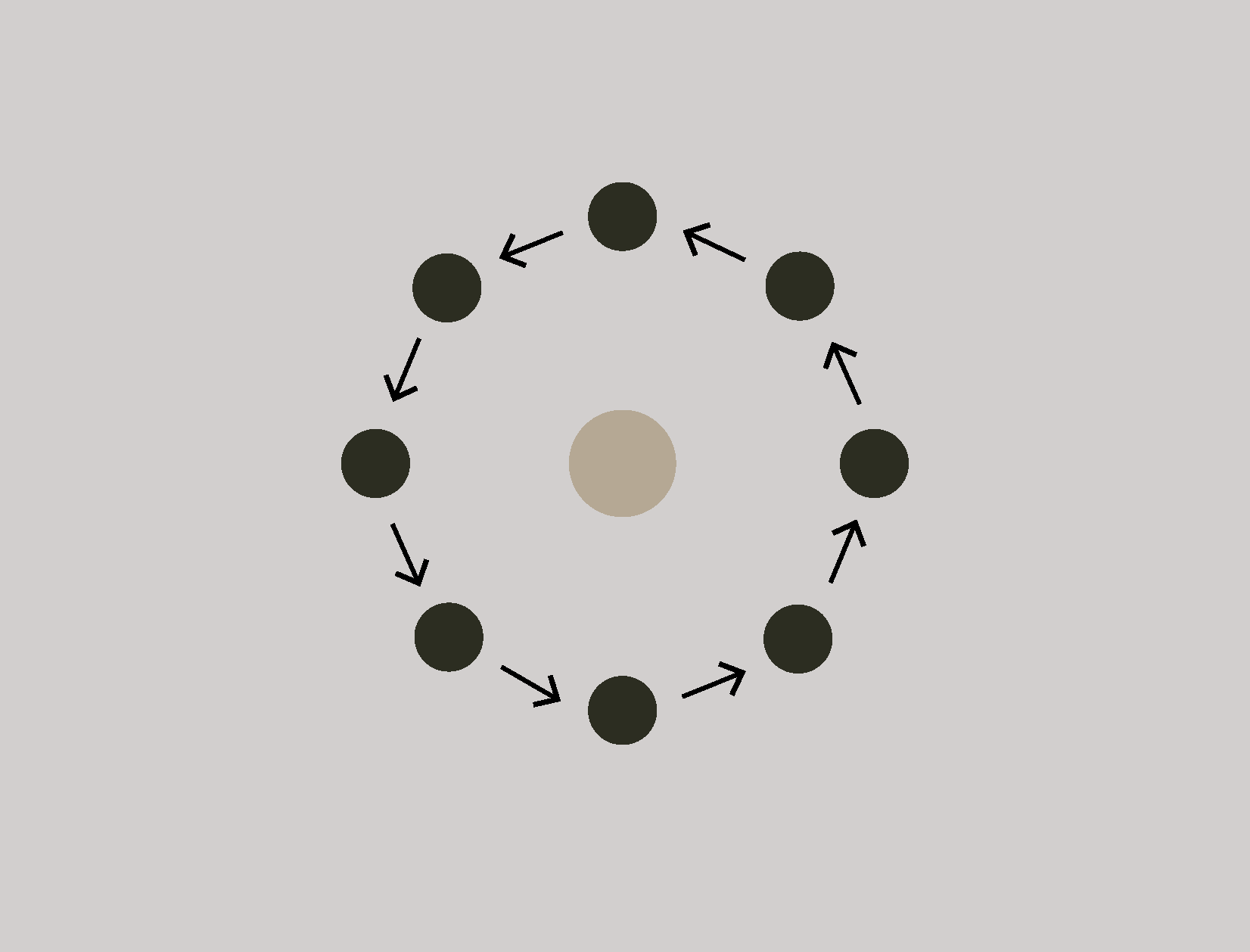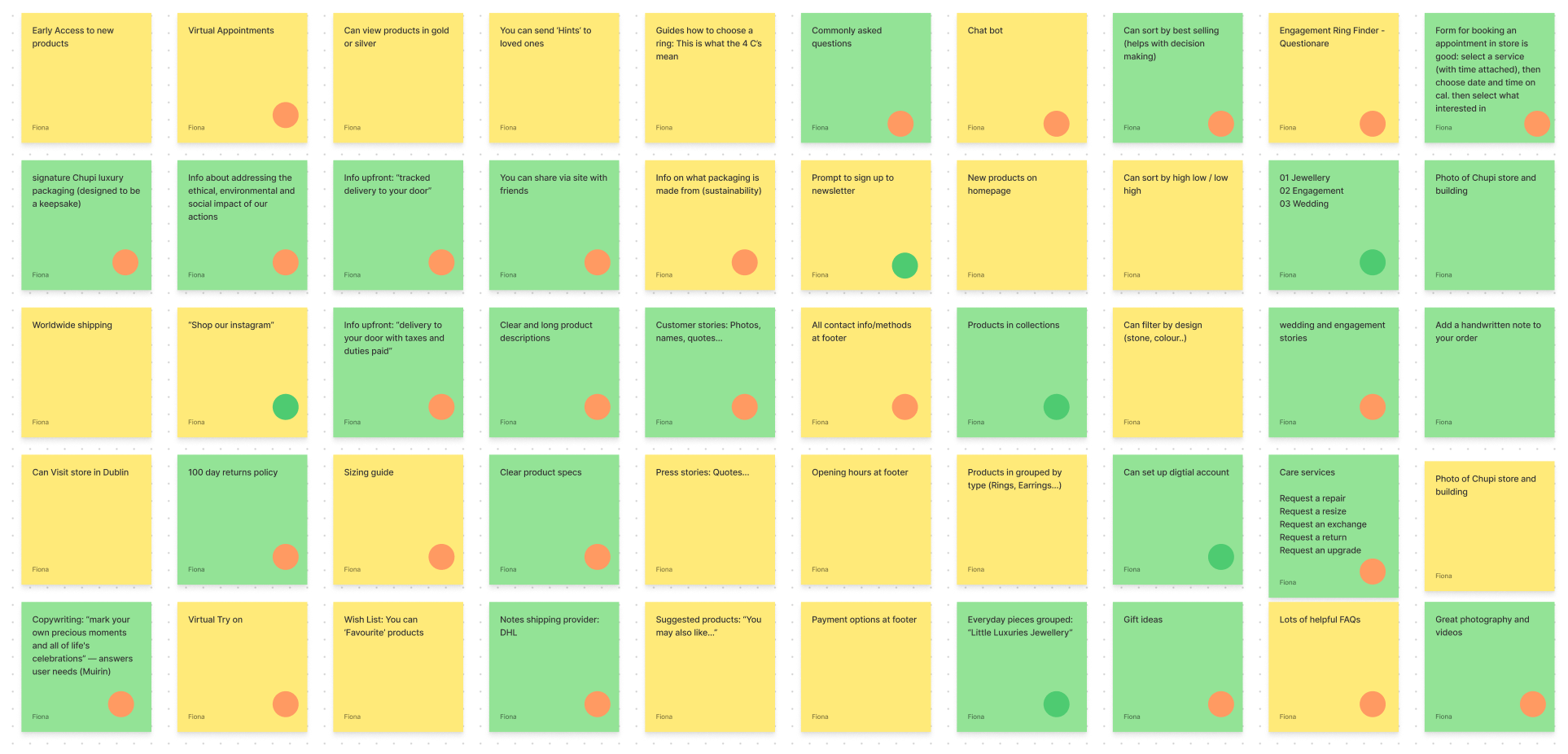Irish jewellery designer
From Customers to Community:
Transforming a Luxury Jewellery Service
A female Irish jewellery designer and gemmologist who creates luxury ready-to-wear pieces and offers a bespoke jewellery service.
Designed at Wove
The Question
How do we build a valuable community that will take less work and create more impact?
This jewellery designer has grown her business with two core offerings — ready-to-wear pieces and a bespoke jewellery service. Building on this, our aim at Wove was to cement and transform her existing customer base into an engaged community. Working with founder, our team wanted to ensure that all the elements are in the right place, doing the right job at the right time and that she can manage it going forward.
After a strategy piece was conducted we arrived at two research questions. My team (of two!) looked at “How are people building valuable communities?”.
The Approach

Examples of brands and businesses that have created valuable communities


01 Analogous research
Why? To understand how others are building valuable communities
We researched brands and businesses that are building valuable communities and deepening connections — from global superbrands like Rapha to Irish grown businesses like The Happy Pear. After creating a virtual synthesis wall we analysed how they do it and what we can learn from existing models.

Community with strong ties to each other

‘Holistic’ community

Community with strong ties to the brand
02 Desk research
Why? To define what a community really is
During the analogous research period, I gained a better understanding of what a community is and what makes it valuable. I created these diagrams to visualise our findings and to communicate better as a team. By looking at some of the most innovative brands, we deepened our knowledge about:
— What it means to be a part of a community. eg. Deep connection to the brand or business.
— Why people join communities and why they stay. eg. Everyone has a shared desire.
— Ways to build community. eg. Priority access for club members.
This research exposed the root of all valuable communities — great experience. With this lens, we explored the current customer experience.

03 Journey mapping
Why? To map moments of friction and opportunity in the current experience
We mapped the moments of friction and opportunities in the current customer experience using proto personas. We mapped their actions, thoughts, feelings and touchpoints across all stages of the experience. This process revealed many pain points and unmet needs within the service, which included:
— Lack of understanding and useful content
— Need for paths to connect
— Lack of clarity on the products, process and experience

Example competitive and comparative benchmarks

Investigating benchmark friction and opportunity
04 Competitors Analysis
Why? To find out what others are doing to reduce friction and to address customer needs
After uncovering moments of friction for this jewellery designer, we revisited our competitive and comparative benchmarks to explore their customer needs and what they’re doing to address them. Some exceptional customer experiences we found include a digital ring sizer to a private chauffeur for repairs to exclusive pop-up events.
We filtered through the identified opportunities to select solutions for the founder that are desirable for her customers, feasible technically and viable for the her business going forward.
05 Ways forward
Why? To define ways that we can tackle friction and build community for Natasha’s customers
This first phase of research uncovered what makes a valuable community, how do others create engagement communities, what our customers’ unmet needs and pain points are and how our competitors address these. Finally, we summarised our main findings into a document that defined the ways forward.
The community is defined by…
— Style signals: Like-minded people who identify with the aesthetic. eg. Quiet luxury
— Sharing experience: People that are navigating a common set of challenges at similar stages in their lives. eg. Brides
— Common values: People that are drawn together around common values and interests. eg. Female-owned Irish business
Customers have unmet needs. We should…
— Assist decision making eg Contextualise products.
— Make stories resonate eg. Tell the story behind the design.
— Create enjoyable journeys eg. Communicate timelines and process
— Build thoughtful relationships eg. Create customer profiles
Following this first phase, our team completed several other sprints which included talking to customers, creating content strands and redesigning email templates and the website.
Details —
Designed with Wove
September 2021 – January 2022
Team: Scott Burnett, Cat Robertson, Kevin Horan, Johnny Kelly, Fiona Ennis, Éadaoin Hennessy